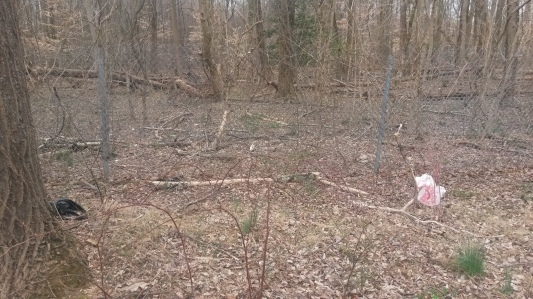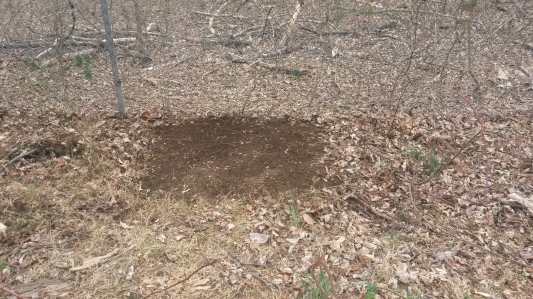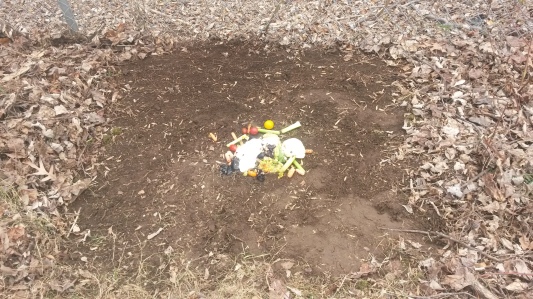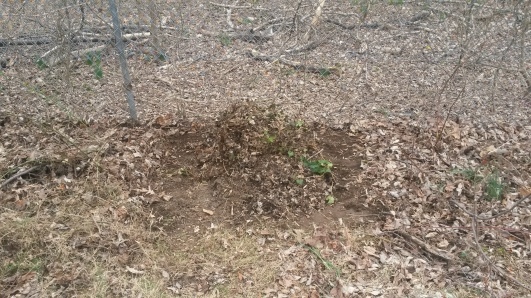Today, I set up our very first compost pile. Here’s all you need to do to get started:
1) Choose a location for your compost pile:

Compost isn’t supposed to smell bad unless you throw gross shit into it like meat or dog poo, but be a good neighbor and keep your compost projects away from your other neighbors’ yards. If you have a pet that goes outside, you may also want to enclose your compost piles; more details on that below.
2) Clear the location so you don’t have to deal with trees growing out of it:

3) Add your food waste:

4) Add your yard waste:

Ta-da! You’re composting!** Well done. Between composting, recycling, cooking your own food***, and selling or donating items you no longer need, you should really now be producing very little actual trash.
There’s a lot of information out there about composting, and I encourage you to read up some more. You’re supposed to maintain a ratio of “greens” and “browns,” but, really, anything you’re composting will be better than what’s in your yard naturally. I eventually plan to set up three pallet compost bins: one for new additions, one for seasoning, and one for the finished product. I’ll move everything over a bin once every maybe six months? Haven’t really done that much reading yet.
One thing I do know, and that you should know even if you don’t dig in beyond this post, is that you need to turn your compost frequently. Get a pitchfork and turn it daily. This does three things: 1) It prevents your compost from catching on fire. Turns out, decomposition produces a lot of heat, and that heat builds up pretty quickly inside your compost pile. 2) It prevents seeds from taking root and growing into plants in your compost pile. 3) It prevents insect eggs from being able to sit still long enough to hatch. Don’t want to be breeding bugs in your wonderful growing materials.
That’s what I’ve got so far. Check back in for occasional updates, and happy composting!
* Get it? At hand? Because I did it all by hand.
** Well, not you; hopefully you’re not composting. But you’re setting up your food and yard waste to compost!
*** Alas, we’re coming up a little short on this one, what with no kitchen.